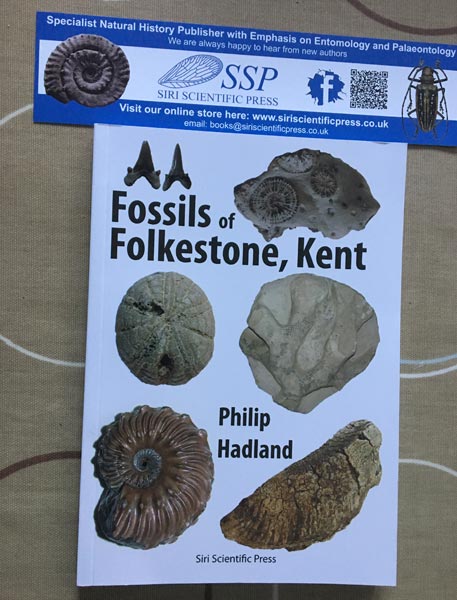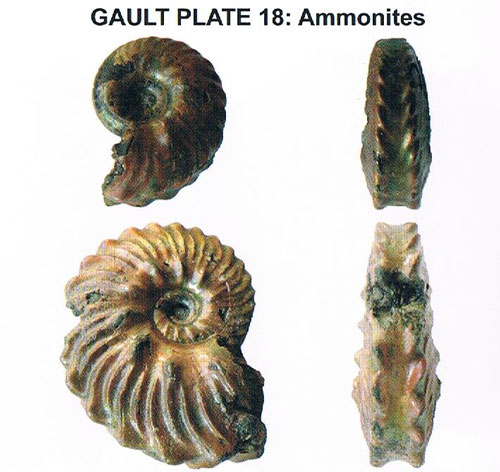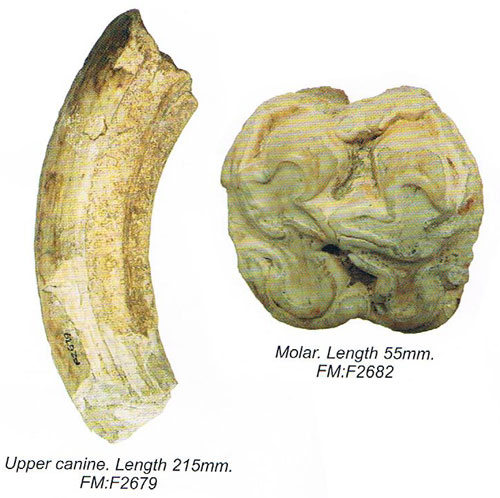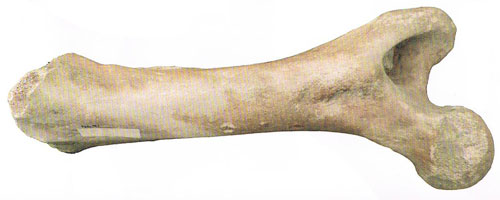A Review of the Fossils of Folkestone, Kent
Fossil collecting is a popular hobby and there are a number of excellent general guide books available. However, the newly published “Fossils of Folkestone, Kent” by geologist and museum curator Philip Hadland, takes a slightly different perspective. Instead of focusing on lots of fossil collecting locations, Philip provides a comprehensive overview of just one area of the Kent coast, the beaches and cliffs surrounding the port of Folkestone.
Here is a book that delivers what its title implies, if you want to explore the Gault Clay, Lower Greensand and Chalks around Folkestone then this is the book for you.
The Fossils of Folkestone, Kent by Philip Hadland – A Comprehensive Guide

Picture credit: Everything Dinosaur
A Comprehensive Overview of the Geology and the Palaeoenvironment of the Folkestone Area
The author clearly has a tremendous affection for this part of the Kent coast. His enthusiasm is infectious and the reader is soon dipping into the various chapters, dedicated to the rock formations exposed along the cliffs and the fossil delights to be found within them. Folkestone is probably most famous for its beautiful Gault Clay ammonites, the clay being deposited around 100 million years ago and a wide variety of these cephalopods can be found preserved in the rocks. The book contains more than 100 full colour plates, so even the beginner fossil hunter can have a go at identifying their fossil discoveries.
Clear Colour Photographs Help with Fossil Identification
Picture credit: Siri Scientific Press
Surprises on the Shoreline
The book begins by explaining some of the pleasures of fossil hunting, before briefly outlining a history of fossil collecting in the Folkestone area and introducing some of the colourful characters who were prominent fossil collectors in their day. The geology of the area is explored using terminology that the general reader can understand and follow, but academics too, will no doubt gain a lot from this publication.
Intriguingly, the Cretaceous-aged sediments were thought to have been deposited in a marine environment, however, the Lower Greensand beds have produced evidence of dinosaur footprints. The palaeoenvironment seems to have been somewhat more complex than previously thought, the Lower Greensand preserving evidence of inter-tidal mudflats, that were once crossed by dinosaurs. Isolated dinosaur bones have also been found in the area and the book contains some fantastic photographs of these exceptionally rare fossil discoveries.
Helping to Identify Fossil Finds
Picture credit: Siri Scientific Press
Prehistoric Mammals
To help with identification, the colour plates and accompanying text are organised by main animal groups. There are detailed sections on bivalves, brachiopods, corals, crustaceans, gastropods, belemnites and ammonites. There are plenty of photographs of vertebrate fossils too and not just fish and reptiles associated with the Mesozoic. Pleistocene-aged deposits are found in this area and these preserve the remains of numerous exotic prehistoric animals that once called this part of Kent home.
Fossil Teeth from a Hippopotamus Which Lived in the Folkestone Area During a Warmer Inter-glacial Period
Picture credit: Siri Scientific Press
“Fossils of Folkestone, Kent”
The author comments that the presence of hippos, along with other large mammals such as elephants as proved by fossil finds, demonstrates how very different Folkestone was just 120,000 years ago. It is likely that humans were present in the area, evidence of hominins have been found elsewhere in England and in nearby France, but as yet, no indications of human activity or a human presence in this area have been found. Perhaps, an enthusiastic fossil hunter armed with this guide, will one day discover the fossils or archaeology that demonstrates that people were living in the area and exploiting the abundant food resources that existed.
A Partial Femur from a Large Hippopotamus Provides Testament to the Exotic Pleistocene Fauna
Picture credit: Siri Scientific Press
With a foreword by renowned palaeontologist Dean Lomax, “Fossils of Folkestone, Kent” is an essential read for anyone with aspirations regarding collecting fossils on this part of the English coast. The book, with its weather-proof cover, fits snugly into a backpack and the excellent photographs and text make fossil identification in the field really easy.
If your New Year’s resolution is to get out more to enjoy the wonders of the British countryside, to start fossil hunting, or to visit more fossil collecting locations, then the “Fossils of Folkestone, Kent” by Philip Hadland would be a worthy addition to your book collection.
For further information on this book and to order a copy: Siri Scientific Press On-line.
Visit the award-winning Everything Dinosaur website: Everything Dinosaur.










Leave A Comment